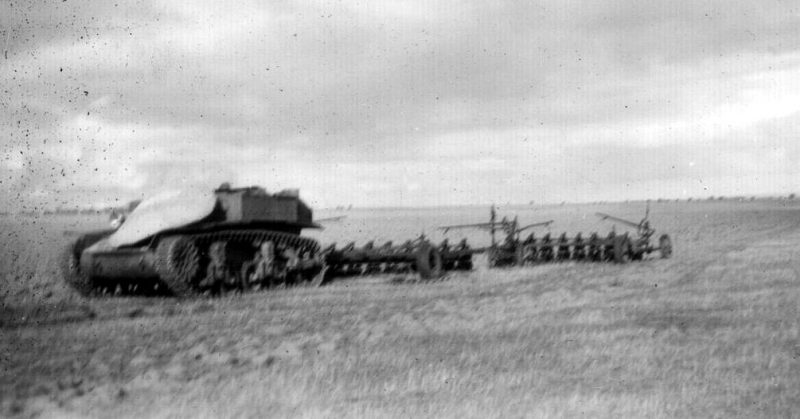Members of the Busted Arse Tank Repairs and Co. use World War II-era tanks to work their farms in rural Australia.
Matt McMahon is a cattle producer in the Oberon district. His father began collecting WWII tanks he picked up at auctions. Matt says he’s heard of farmers getting an entire row of tanks for 50 Dollars.
McMahon said tanks were an important part of forming the Australian properties. McMahon’s father used his tank to build dams and clear brush.
Shane Casey is the Australian War Memorial’s senior curator for Military Heraldry and Technology. He says that no one kept track of surplus military equipment, so it is hard to say how many farms use them.
McMahon now has about a dozen military surplus vehicles. He has five Matilda tanks, a Centurion, three Bren Gun Carriers and several jeeps.
He gathers with other military equipment aficionados on the weekend to work on their historic vehicles. They call themselves the Busted Arse Tank Repairs and Co (or BATRAC, for short). When they aren’t getting the WWII-era vehicles in working condition, they take their vehicles out for rides in the paddocks. Sometimes up to a dozen people climb aboard as they power along, stopping only to open a gate here and there.
McMahon makes it clear that BATRAC is not about glorifying war or playing war games.
“It’s more about the tribute to the people, the men and women that made them in the late 30s early 40s and the task that they played in giving everybody the freedom that they now enjoy,” he said.
It’s an expensive hobby. One tank uses six gallons of diesel every hour. Another uses 13 liters of gasoline every 100 yards.
They sometimes ride the vehicles in parades and other commemorative events. That’s becoming less common as it becomes more difficult to get a permit to take them on the street, ABC News reported.
As the tanks become more popular with collectors, the value has been increasing. One of the tanks that McMahon’s father paid $250 for in 1972 is now worth around $300,000.
https://www.youtube.com/watch?v=Nm5gvMer2PM
